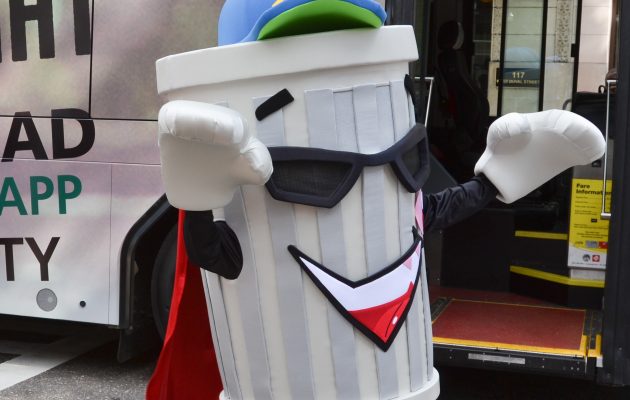New smartphone app to help fight city blight
Posted on May 1, 2015 By Editor Articles, Neighborhood News, Top Stories

They’re considered litter on a stick – “snipe” signs – that are often seen on public property such as electric poles, fences, stakes or in city right-of-ways advertising everything from tax refunds to rooms for rent. And they’re illegal.
Snipe signs are one bane on Jacksonville’s landscape that City Hall has decided to fight with its new smart phone application MyJax. The app is one of several initiatives announced by City Hall in March to combat urban blight such as overgrown grass, litter, illegal dumping and abandoned homes.
“I used (the app) myself today,” said District 14 Councilman Jim Love. “I didn’t even have to get out of my car. I just snapped a photo with my phone and used the app to send it in.”
When a resident reports something ugly on the urban landscape all they need do is pull up the new smartphone app, snap a photo of the trashy condition and electronically file a case with City Hall enforcement. The app uses the phone’s GPS to identify exactly where the violation has occurred and includes the location with the report.
With the app, the city is trying to reach residents that would be more inclined to report things via text message than by making a phone call. The app also allows people report dead animals in a city right of way, mosquito inspection or spraying, potholes needing patches, hazardous or missing sidewalks and scheduling to pick-up appliances or tires.
Once an abuser has been cited by the city for an illegal sign, they will have “10 days to pay,” Love said. “If they don’t, we have purchased an automatic (phone) dialer that will begin calling that number until they take care of (the fine),” he said.
In addition to the new phone app, Jacksonville’s Fight Blight initiative includes several other features. A new website, www.coj.net/blight, has been set up to provide information on what blight is, how residents can help eliminate it and what the city is doing specifically to address the problem. Also, Fight Blight kiosks will be placed in various city neighborhoods to give residents “hands-on” facts about the negative impact of blight.
Along with the kiosk, the city will have a Fight Blight mascot, a walking trashcan adorned with sunglasses and a blue ballcap, who will make appearances at special events. JTA and the city have also unveiled a new bus with a colorful wrap promoting the MyJax app.
The Flight Blight initiative is the result of a coalition between Mayor Alvin Brown’s administration, the Jacksonville Transportation Authority, the Jacksonville Children’s Commission, JEA, the Jacksonville Public Library, the Jacksonville Sheriff’s Office and Duval Country Public Schools.
Although Riverside, Avondale and Ortega represent some of the pricier properties in town, they aren’t immune to blight, Love said.
“I wouldn’t call it a big problem, but it is a problem,” he said. “Snipe signs are the biggest problem we have. We occasionally have abandoned homes or junk cars, but not too often.”
Legislation passed by the City Council in January will allow the city to target homes after they have been without utilities for at least two years. Demolition is only allowed on homes declared “non-historic,” giving property owners in the historic areas of Riverside and Avondale additional protections on their buildings.
The blight legislation requires the city to flag all abandoned structures over 50 years old for review by the Planning and Development Department, which would determine whether the building should be deemed historic. Usually the city prefers to “mothball” a historic property by boarding it up to prevent leaking and vandalism rather than demolishing it, officials said.
The legislation allows privately-owned dilapidated structures to be declared blighted and eligible for demolition if there are unpaid code enforcement fines, nuisance and demolition liens, or the property has been without water or electrical service for 24 consecutive months.
Before it tears a building down, the city can offer non-historic structures slated for demolition to local non-profits such as HabiJax to see if they can be rehabilitated. The property might also be turned over to a private company or adjacent landowners if they can show a planned use for it.
City inspectors generally focus on the portion of Jacksonville bordered by the Trout River to the north, I-295 to the west, I-10 to the south and the Southside connector to the east, said Robert Prado, head of Jacksonville’s Municipal Code Compliance Department, noting his department only knows about abandoned homes if the city has determined code violations are occurring.
“We are focused on areas of the city with homes with unsafe structures, above average vacancies, building code violations and that are in the older urban center of the city,” he said, adding that the city wants to determine how many abandoned houses are in each neighborhood.
By Marcia Hodgson
Resident Community News




 (No Ratings Yet)
(No Ratings Yet)




